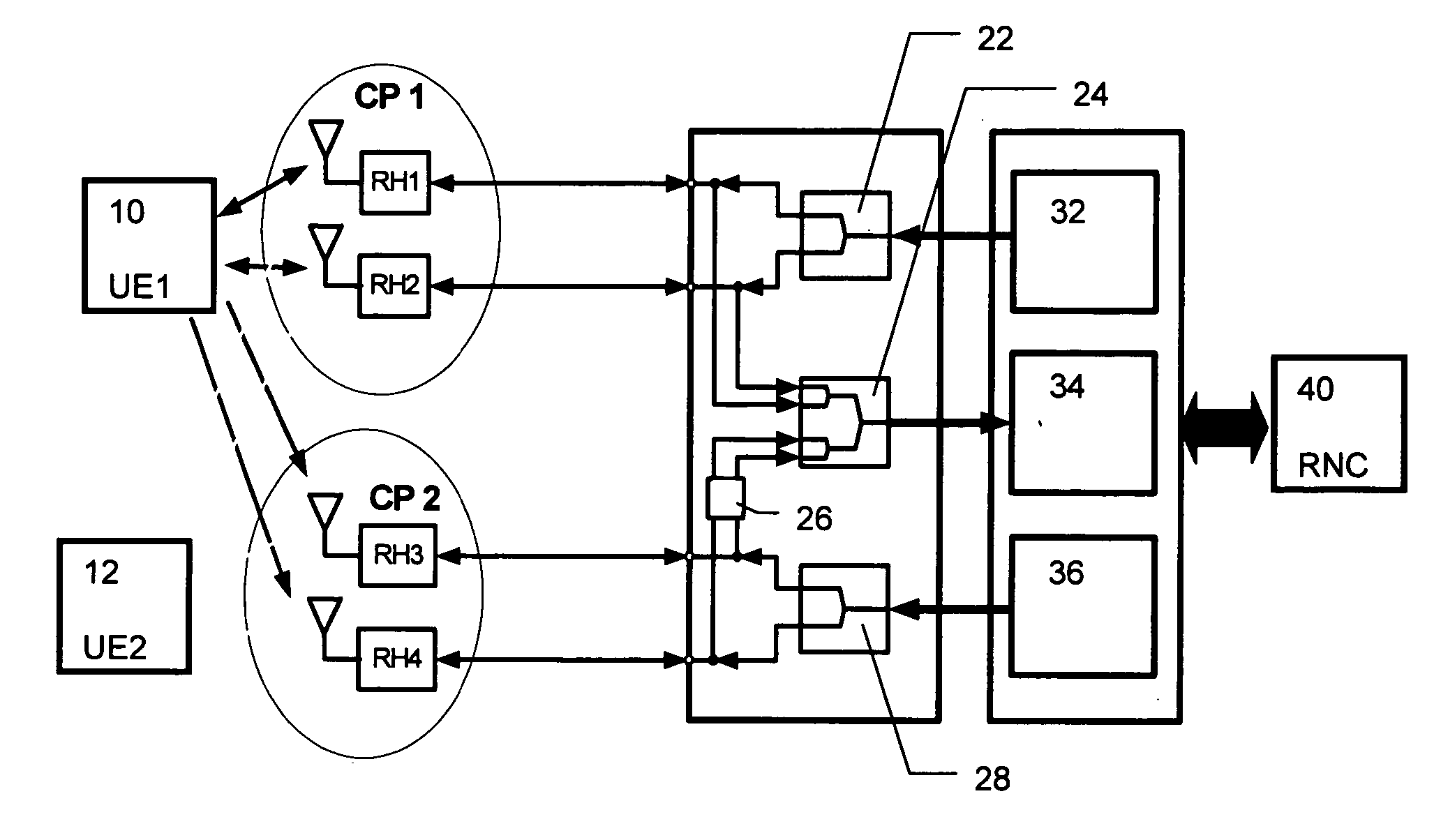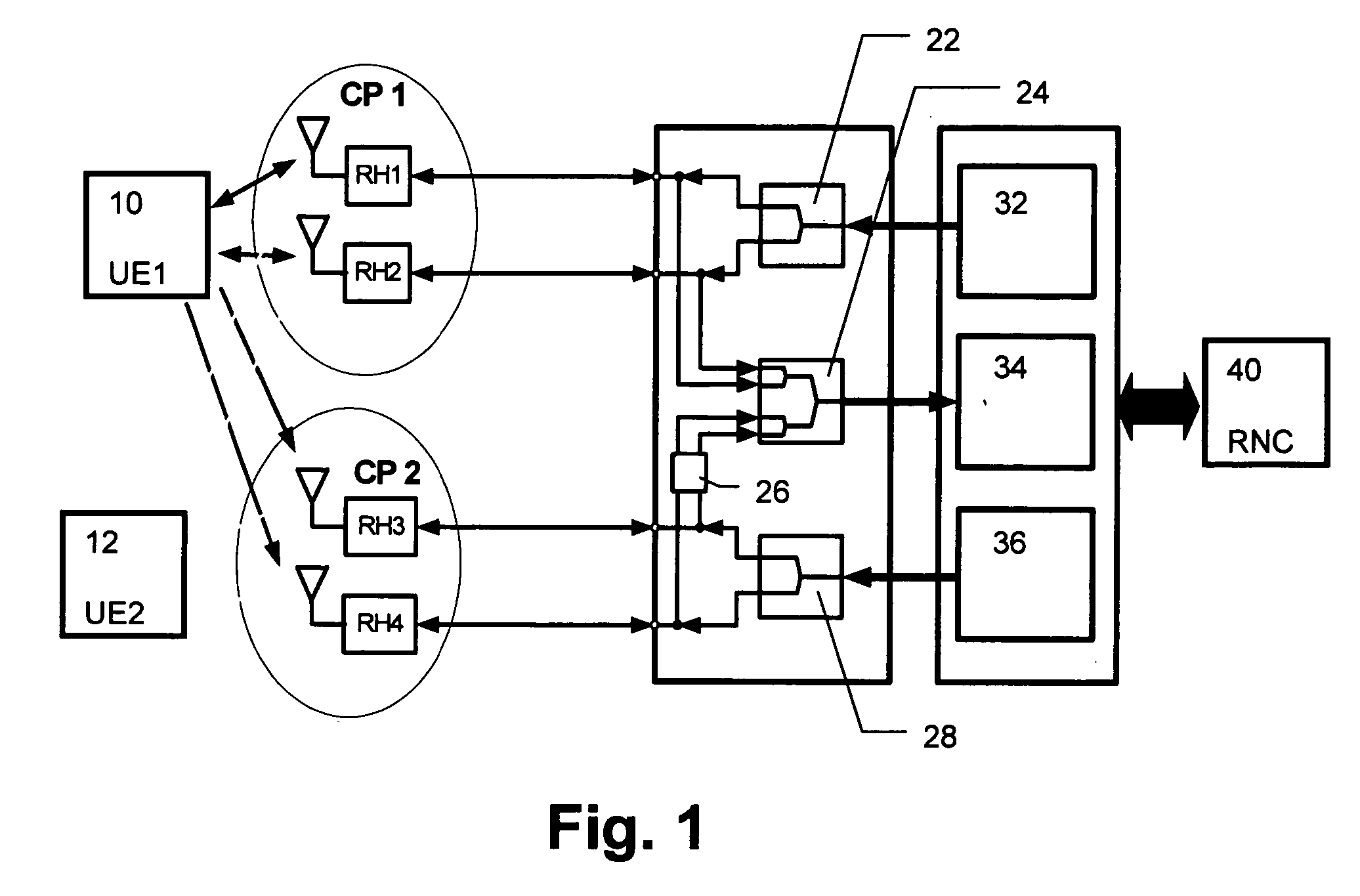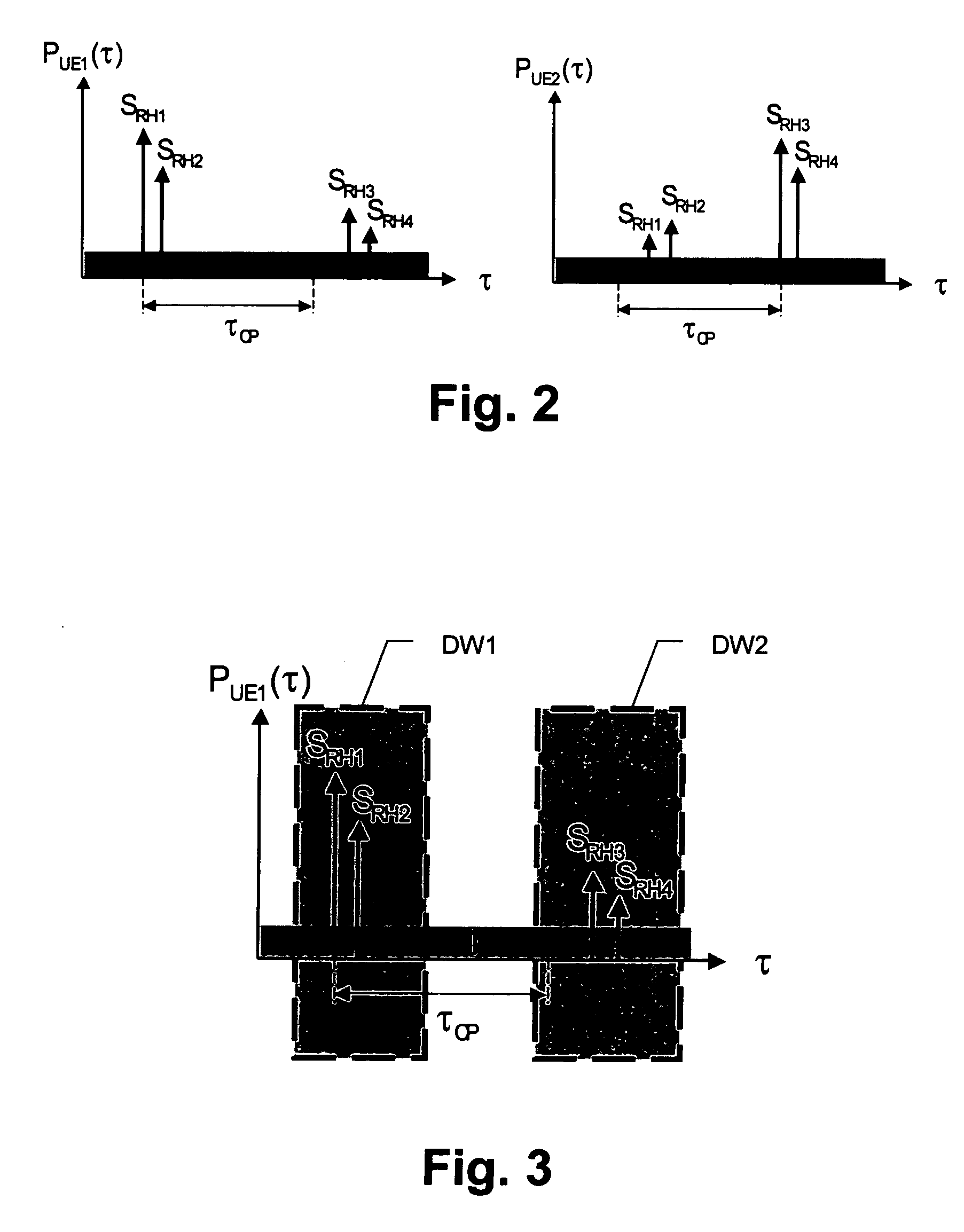Delay-based cell portion selection
a cell portion and selection technology, applied in the field of delay-based cell portion selection, can solve the problems of low capacity of proposed distributed base station concepts, increased downlink capacity automatically accompanied by a necessary similar upgrade of uplink capacity, operation and complexity, etc., to achieve the effect of reducing complexity and ensuring the separation of cell-portion specific signals
- Summary
- Abstract
- Description
- Claims
- Application Information
AI Technical Summary
Benefits of technology
Problems solved by technology
Method used
Image
Examples
Embodiment Construction
[0029] The preferred embodiment will now be described on the basis of a distributed base station concept in a UTRAN environment.
[0030]FIG. 1 shows a schematic block diagram of the first preferred embodiment, wherein a first UE 10 and a second UE 12 are connected with respective antennas of remote heads RH1 to RH4 of respective cell portions CP1 and CP2 to a splitter / combiner architecture of the distributed base station or Node B. The splitter / combiner architecture comprises two downlink splitters 22, 28, one allocated to the first cell portion CP1 with its remote heads RH1 and RH2 and the other allocated to the second cell portion CP2 with its remote heads RH3 and RH4. Thereby, an improved capacity is achieved in the downlink direction due to the fact that the two cell portions CP1 and CP2 are individually supplied by dedicated transmission signals. In the uplink direction a common combiner 24 is provided which combines all four signals received from all remote heads RH1 to RH4 of ...
PUM
 Login to View More
Login to View More Abstract
Description
Claims
Application Information
 Login to View More
Login to View More - R&D
- Intellectual Property
- Life Sciences
- Materials
- Tech Scout
- Unparalleled Data Quality
- Higher Quality Content
- 60% Fewer Hallucinations
Browse by: Latest US Patents, China's latest patents, Technical Efficacy Thesaurus, Application Domain, Technology Topic, Popular Technical Reports.
© 2025 PatSnap. All rights reserved.Legal|Privacy policy|Modern Slavery Act Transparency Statement|Sitemap|About US| Contact US: help@patsnap.com



